This Thursday the worldwide Costube Symposium (CoSy) 2021 kicks off and runs through the weekend. Various events are being held on Instagram as well as numerous FREE video premieres. I will have a video debuting on my Youtube channel on both Friday and Saturday. Friday’s video will be about how I made an 1840’s dress and Saturday’s video will feature a recent costumed tea party I held at home. I went all out for the party and thought you might enjoy a sneak peek of the 1840s Food and Party Favors.
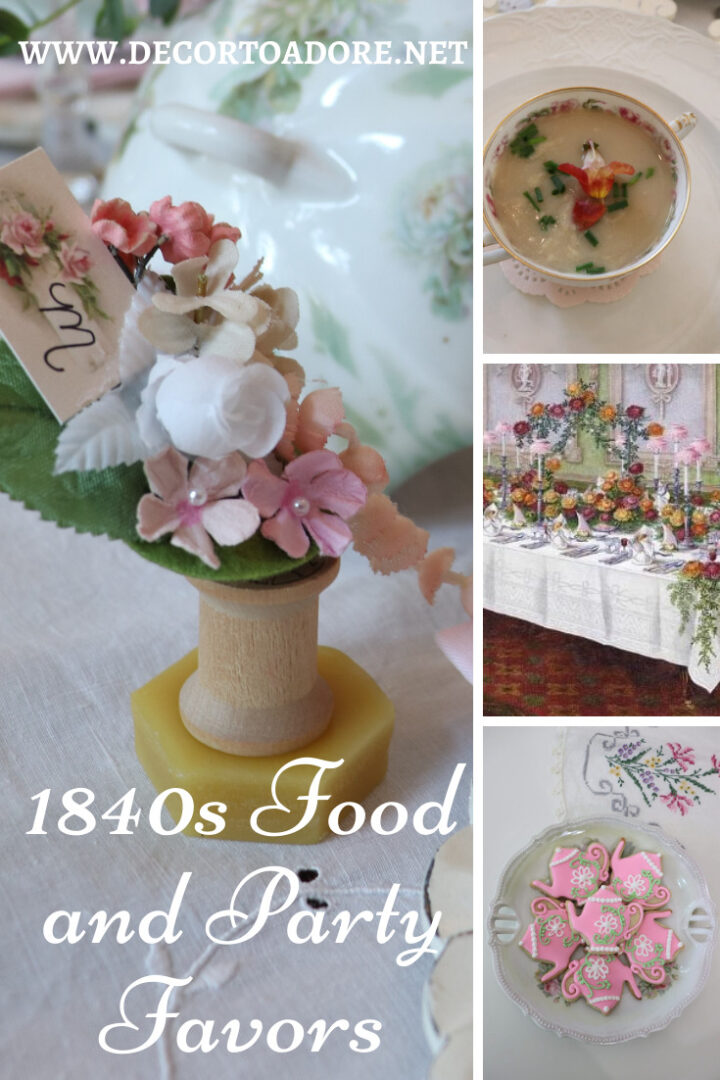
1840s Food and Party Favors
As the party theme was a specific era I first began researching the 1840s.
The biggest event at the beginning of the decade was the marriage of Queen Victoria to Prince Albert on February 10, 1840. These dazzling young Royals really set the tone for the popular fashions of the day. One of the biggest influences was that of the Queen’s white wedding gown. This is a tradition that is still observed today. I decided that the primary color palette would primarily be white in a nod to the Queen.
Queen Victoria in Wedding Veil by Franz Xaver Winterhalter, 1847

In terms of the actual table setting, I then looked at Women’s Worlds The Art and Life of Mary Ellen Best 1809-1891.
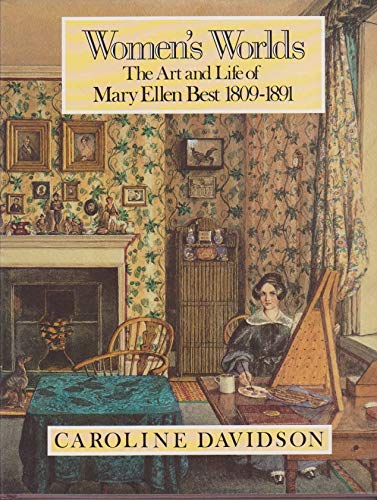
Mrs. Best was an English artist who is most well known for the interior paintings of her home between 1837-1840.
A Dining Room At York

A great book full of interesting information was The Servants’ Guide published in 1831. You can view the Ebook for free HERE.
The word “Receipts” was actually used to describe recipes. So this provided a good guideline for popular foods of the day.
A la Russe
From the book, I learned a new term: dining a la Russe (in the Russian style). Around 1810 to 1814 the prior dining style of a la Francaise (in the French style) fell out of favor. The new style was favored by the Russian court by the Russian Ambassador Prince Borisovitch Kourakine. It soon caught on in Paris.
Here is the description:
In the arrangement of large dinners, there has lately been much novelty introduced: the dinners given at the houses of some noblemen during the season of 1829 having been served in the style termed a la Russe, which consists of the dessert being placed on the table at the same time with the first course, forming together four lines of dishes; after the second course is removed, the dessert, which had been previously arranged next to the plateau or candelabras in the centre, is now drawn forward, and then occupies the place of the second course. By this method, much bustle is avoided during the repast, especially where a large company is assembled, and it has been found decidedly a very superior plan; the appearance of the table is also extremely elegant.
You may recognize this style of dining as what we often do today. Restaurants start with the entree, next is savory and progressing to the sweet.
The book also provided information on how tables should be laid for various meals.

What To Eat
Although written a bit later the recipes featured in Beeton’s Book of Household Management were gathered from earlier cookbooks that fit the timeline such as Eliza Acton’s Modern Cookery for Private Families (1845) and Maria Eliza Rundell’s A New System of Domestic Cookery (1806).

With recipes and a color scheme in place, I then turned my thoughts over to which china I would use. A few months ago I had written about my collection of Antique Bavarian China. The dishes were made in the Bavarian region of Germany. Collecting the dishes grew in popularity in the Victorian Era. I do not know if this was due to Prince Albert himself being German but the soft shades of white and pink would work well.

The Tea Menu
As my guests and I gathered in the mid-afternoon lighter fare was selected.
The first course was cream of potato soup. It was garnished with fresh chive and organic edible snapdragon flowers.
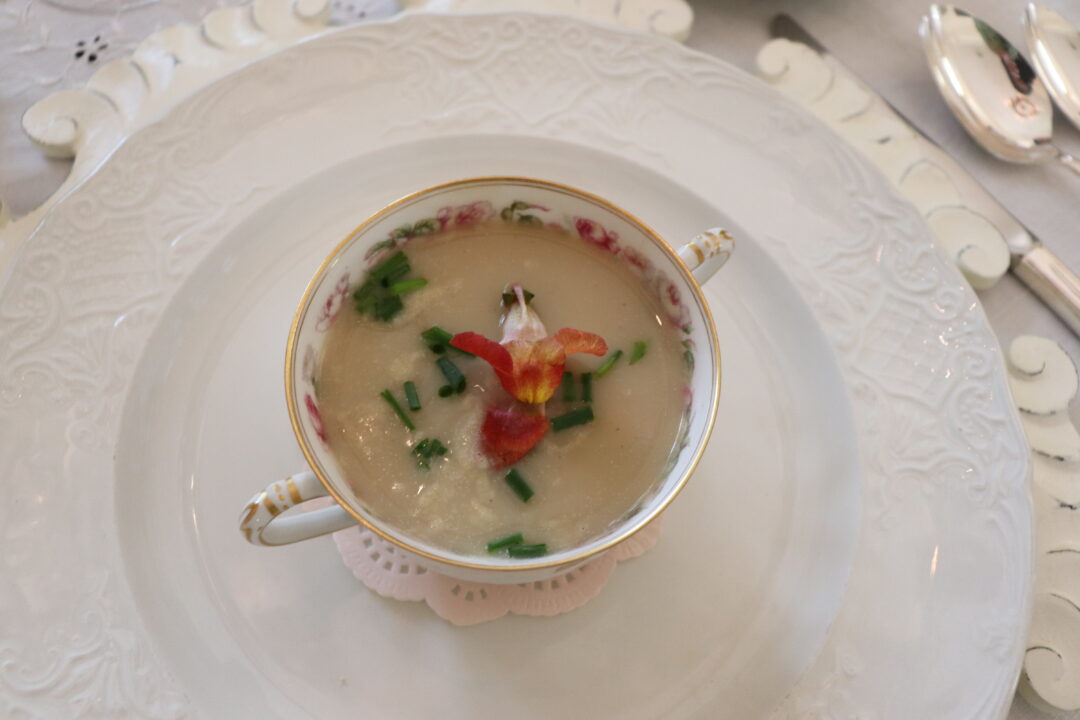
The first savory selection offered was mini quiche Lorraine topped with heirloom tomatoes, chives, and basil.
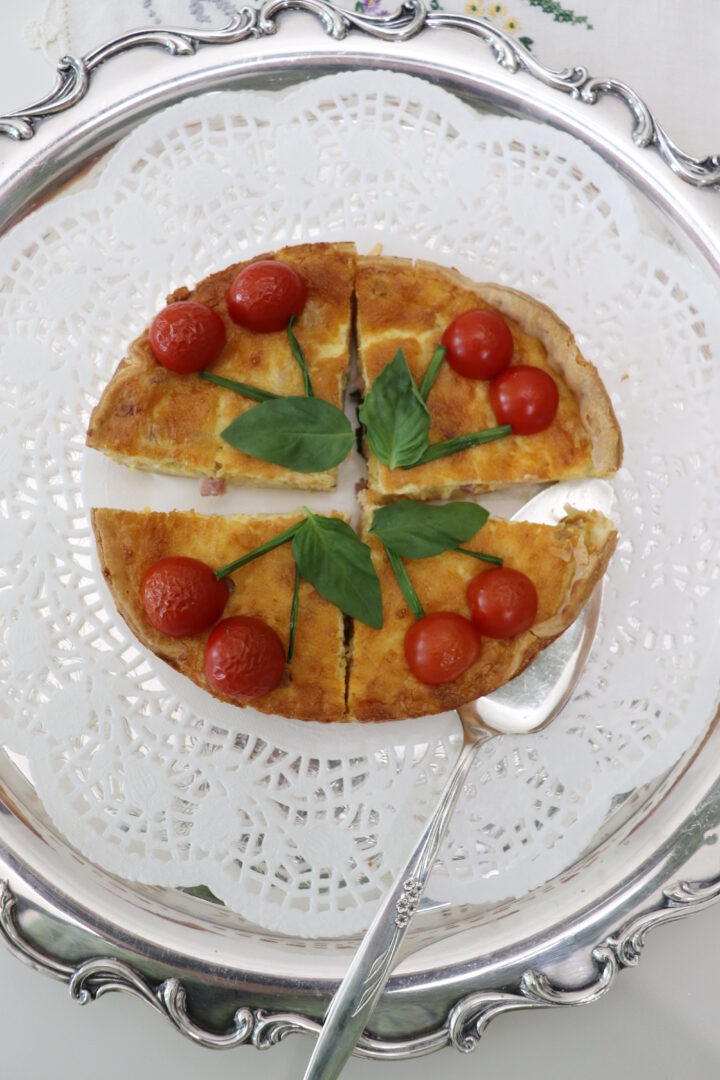
This was followed by a second selection of savory items to include dried meats, cheese, and nuts.
Note: during these courses, the guests were offered a choice of water or lemonade. Sweet to the savory.
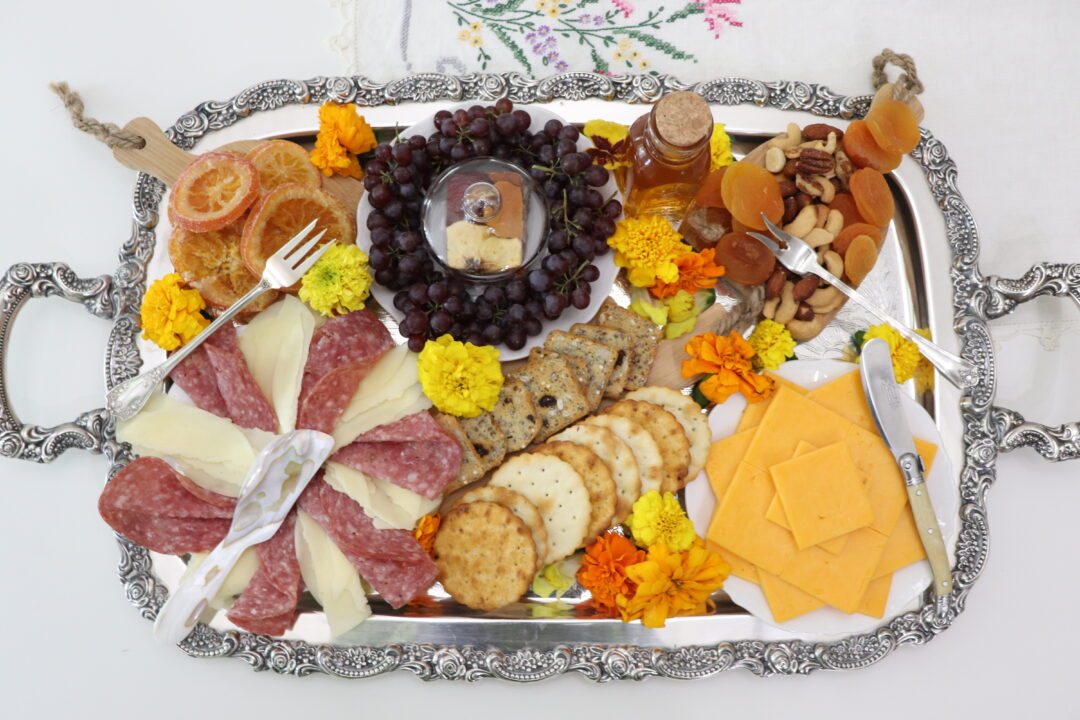
I would like to take a moment to thank my amazing attendant, Megan, who did a superb job of bringing each course to the table.
Although I do need to give the poor girl a raise as she was still wearing Regency-era clothing.
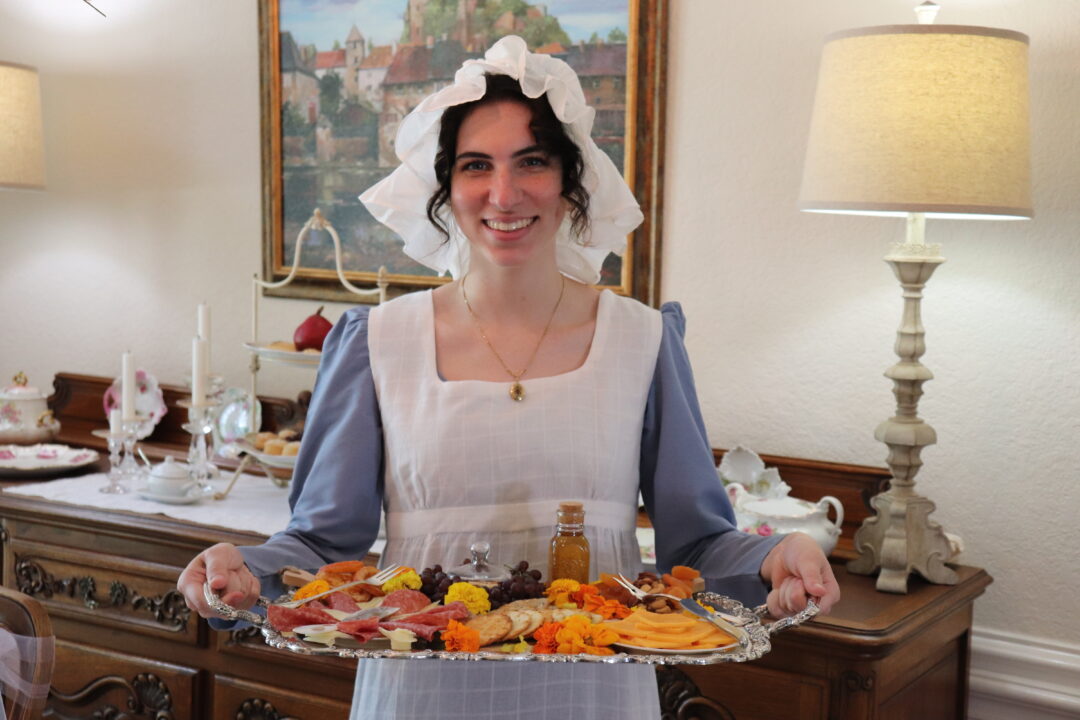
It was then time for the sweets. My favorite course! One of my guests, Tiffany, brought some beautiful cookies.
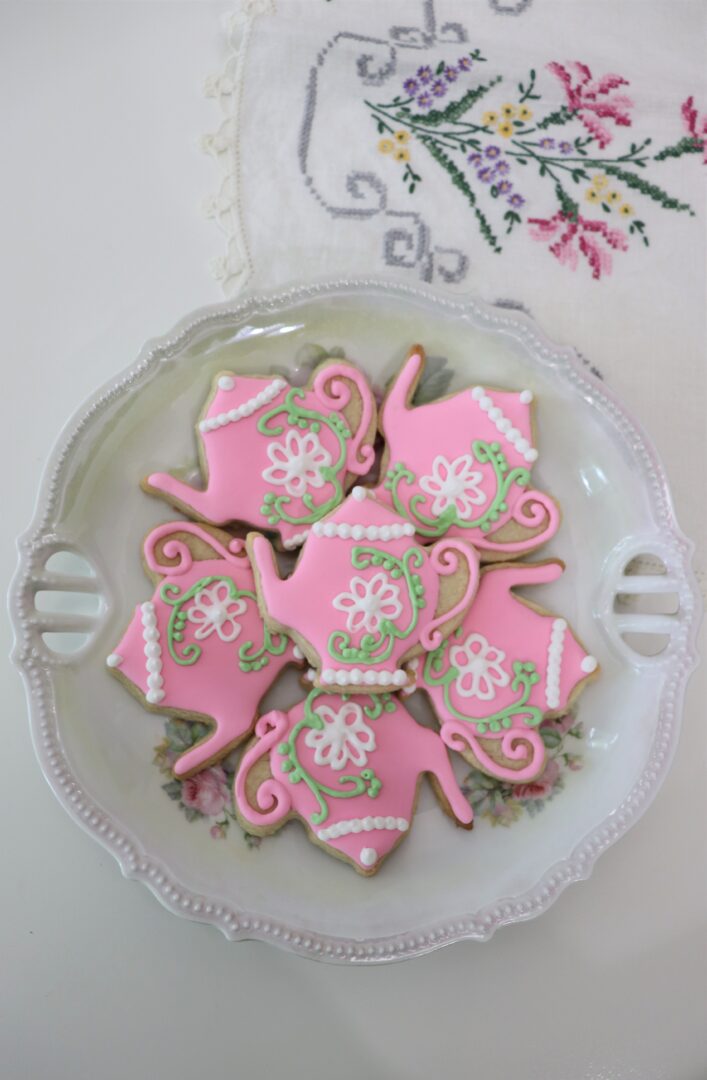
They were the perfect accompaniment to the fresh berries with cream and scones with lemon curd.
Note: The drink selection was Ladurée’s Marie-Antoinette tea. Although the tea was first served in 1862, it is my favorite. We must make allowances.
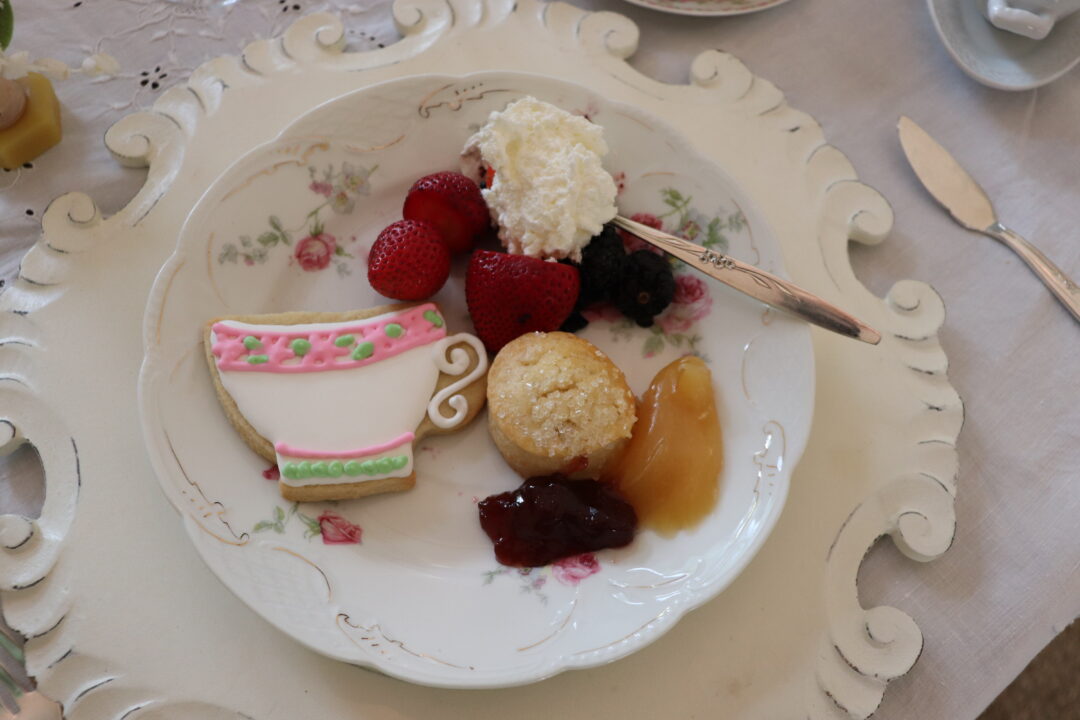
The Digestif
Afterward, a cherry cordial was offered. This digestif contains smashed cardamom pods (cardamon spice does not use pods). The spice is a known carminative that aids digestion.
How To Make Cherry Cordial
- 1 ½ pounds/5 cups fresh whole dark sweet cherries, pitted and stems removed
- 2 cups granulated sugar
- 2 cups water
- 1 ½ teaspoons cardamom pods, smashed
- 1 ½ teaspoons grated orange zest, plus 1/2 cup fresh juice (from 1 orange)
- 2 cinnamon sticks
- Optional: 1 (2-inch) piece fresh ginger, peeled and sliced
Stir ingredients together in a medium saucepan. Bring to a boil over medium-high heat stirring occasionally. Reduce heat to medium heat, stirring occasionally, until cherries are tender and liquid is a thin syrup consistency (approximately 20 to 25 minutes). Remove from heat.
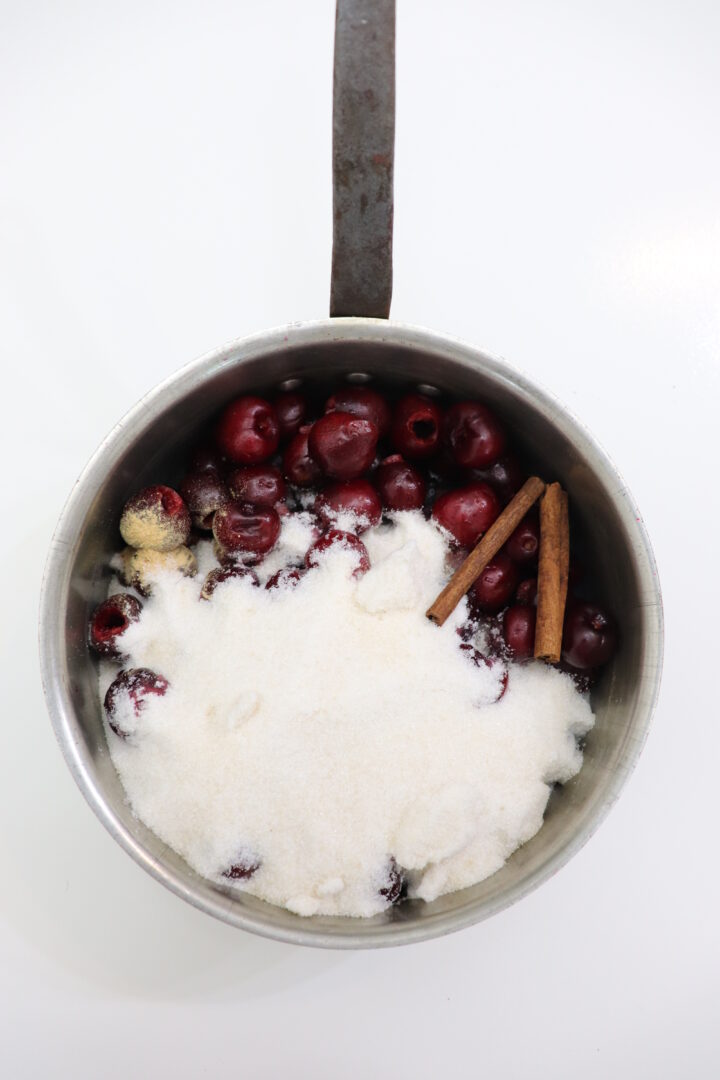
- Set a strainer over a large heatproof bowl. Pour the cherry mixture through the strainer into a bowl. I used a potato masher to extract the remaining juices.
- Do not discard the cooked cherries. They are delicious in muffins, turnovers, or topped on pancakes. (Set aside the cooked cherries.)
- To enjoy, pour a ¼-cup serving over an ice-filled cocktail glass and top up with tonic water, or chilled sparkling white wine.
- Cherry cordial may be stored in resealable glass jars in the refrigerator for up to 2 weeks.
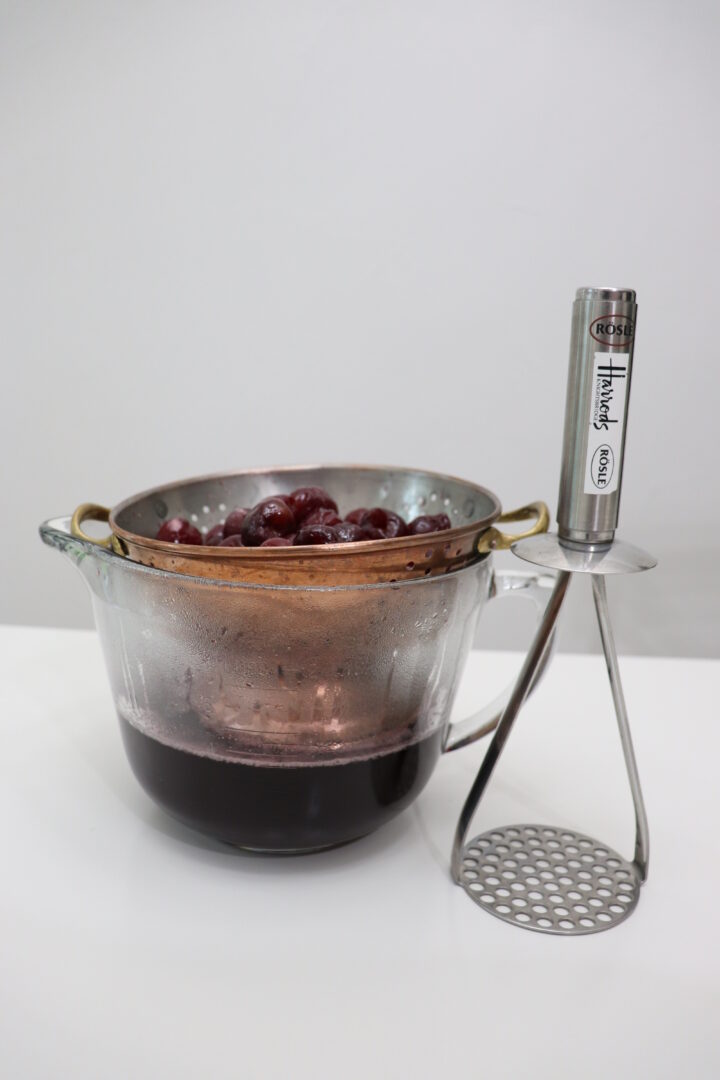
Little Trinkets
In the Victorian era, it was quite common to offer guests a small gift or memento at their place setting so that they would remember the day. It could be a book of poetry, chocolate, lace, ribbon, and more. I wanted to do this as I had asked my guests to dress in 1840s fashion. Each of my fellow Costubers (Costumers who make Youtube videos.) made a beautiful dress to attend the tea. What a gift it was to me to see such beauty!
The first gift was a place card. It made reference to their sewing skills.
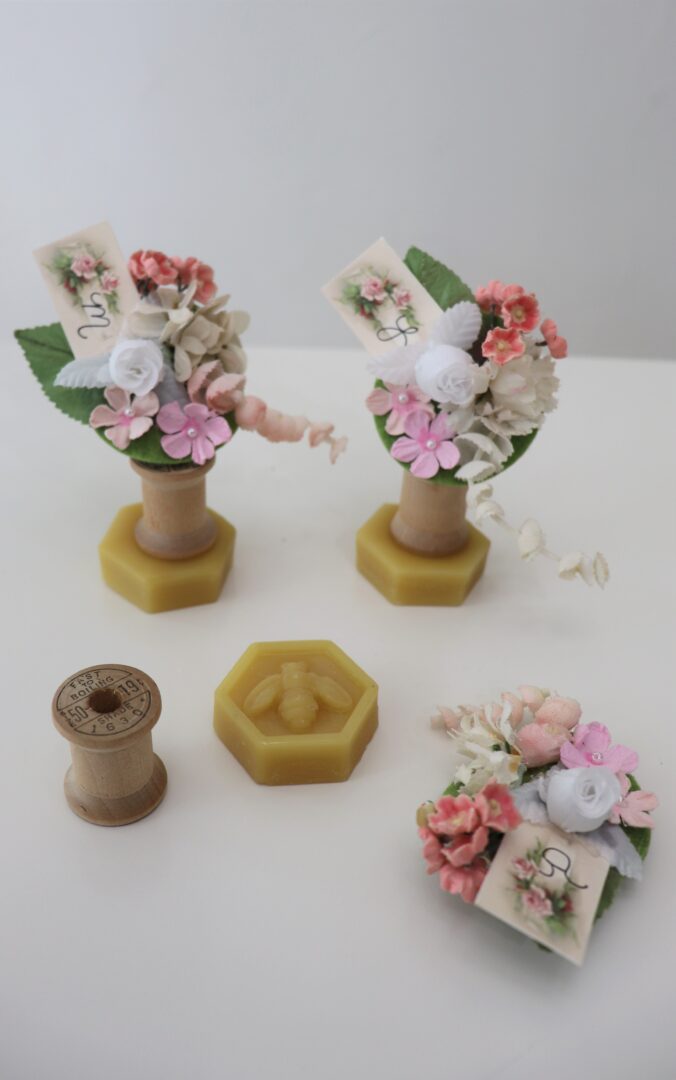
- The base was a cake of beeswax. (Used to coat linen thread when hand sewing.)
- A vintage wooden spool.
- The top featured a few vintage flower posies attached to wool felt. (It could later be worn on coat lapels, belts, hats, and more.)
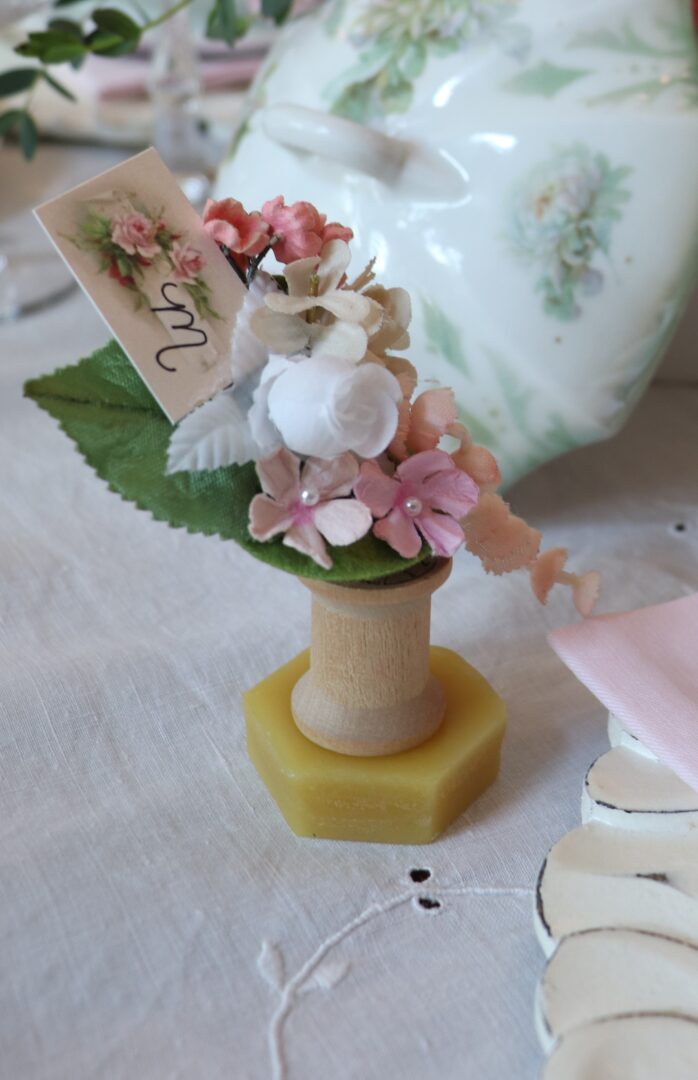
Altered Journals
On their seat, each guest found an altered journal that commemorated the 1840s.
Worn-out children’s books were covered in fabric embellished with lace.
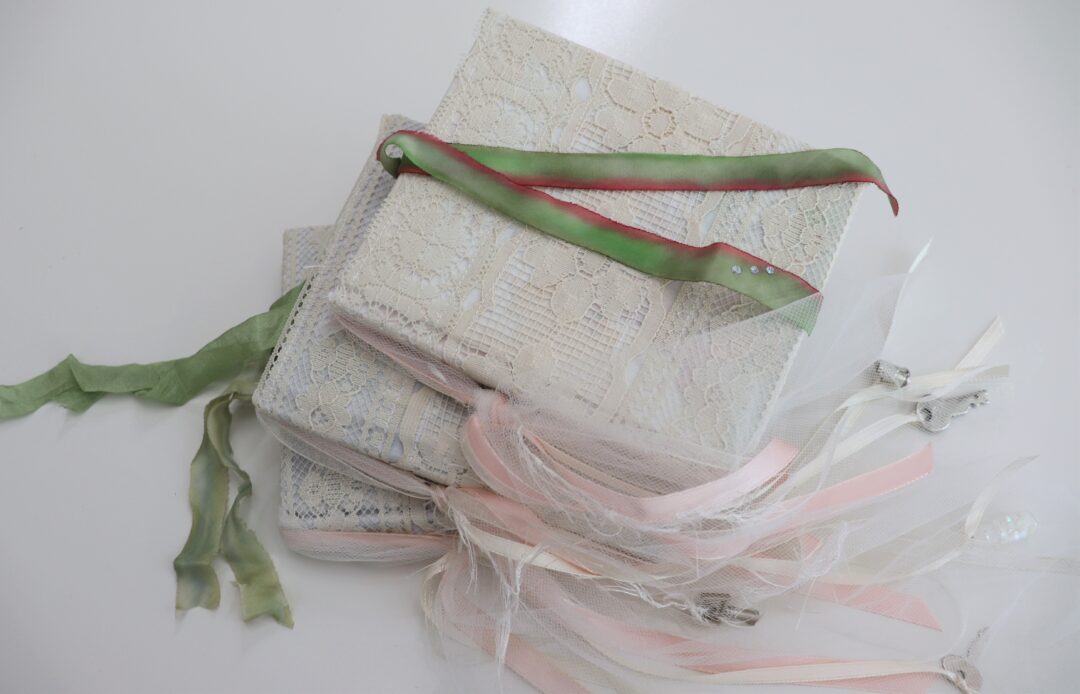
After applying the lace cover it looked like this on the inside.
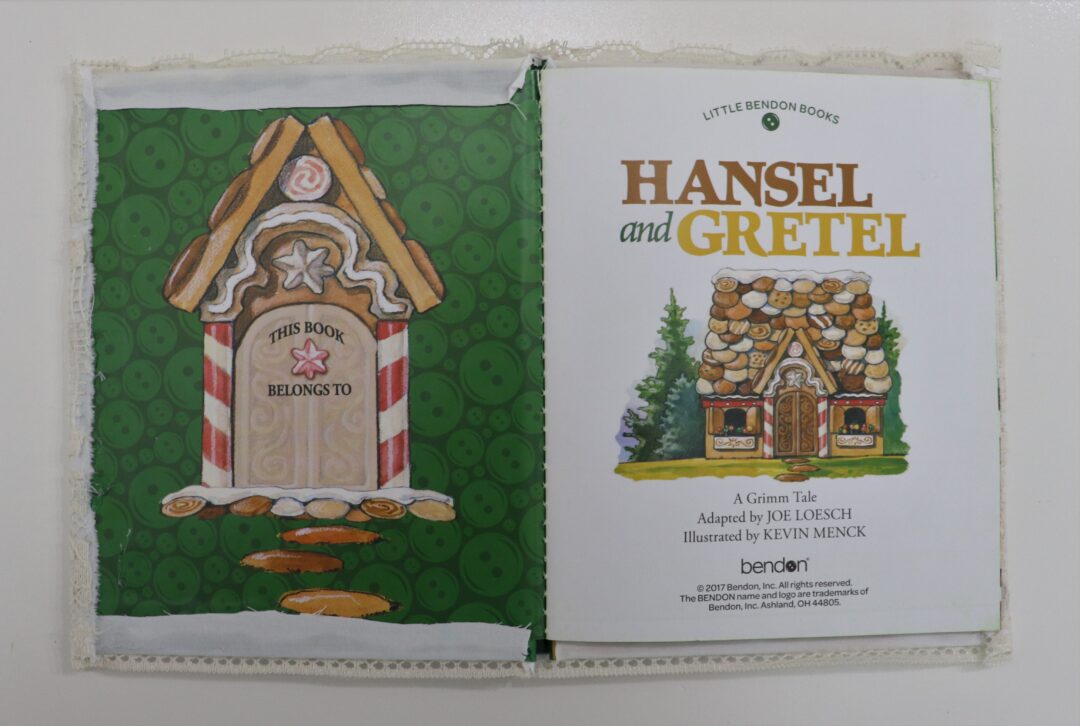
I collected various images from the 1840s. You can find them on my 1840s Party Ideas on Pinterest. They were printed out and used with scrapbooking paper and other touches.
Decorative pages were put together first and then applied to the existing pages.
Many of the pages were interactive such as the one on the right which has a small pocket containing a tea sachet.
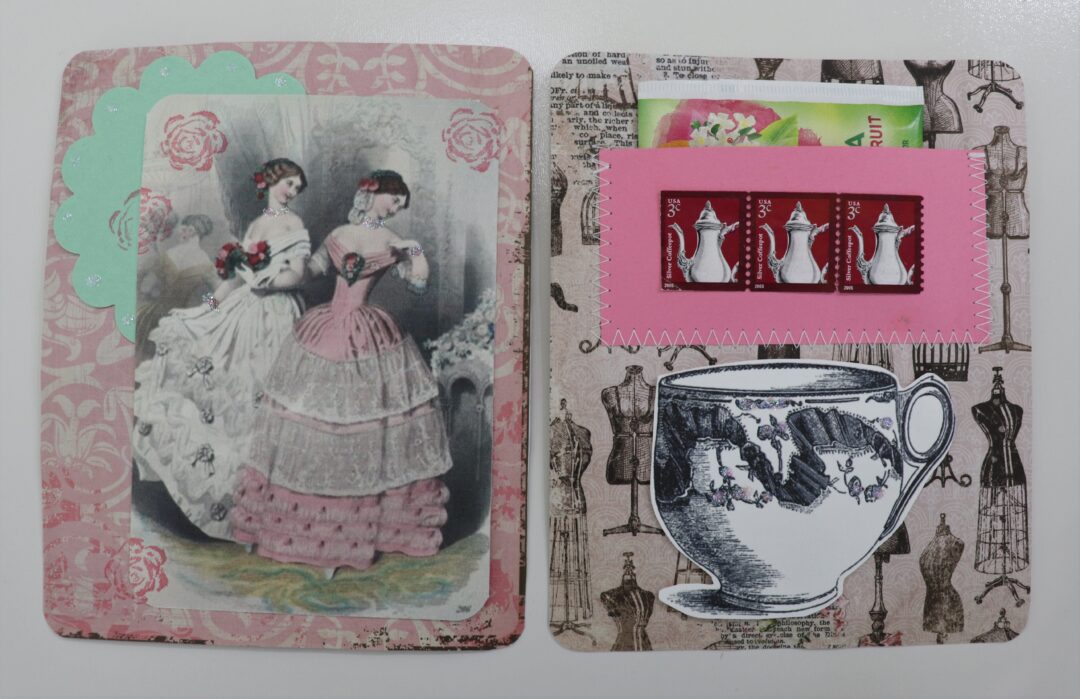
In this Saturday’s post, I will be giving away one of the altered journals.
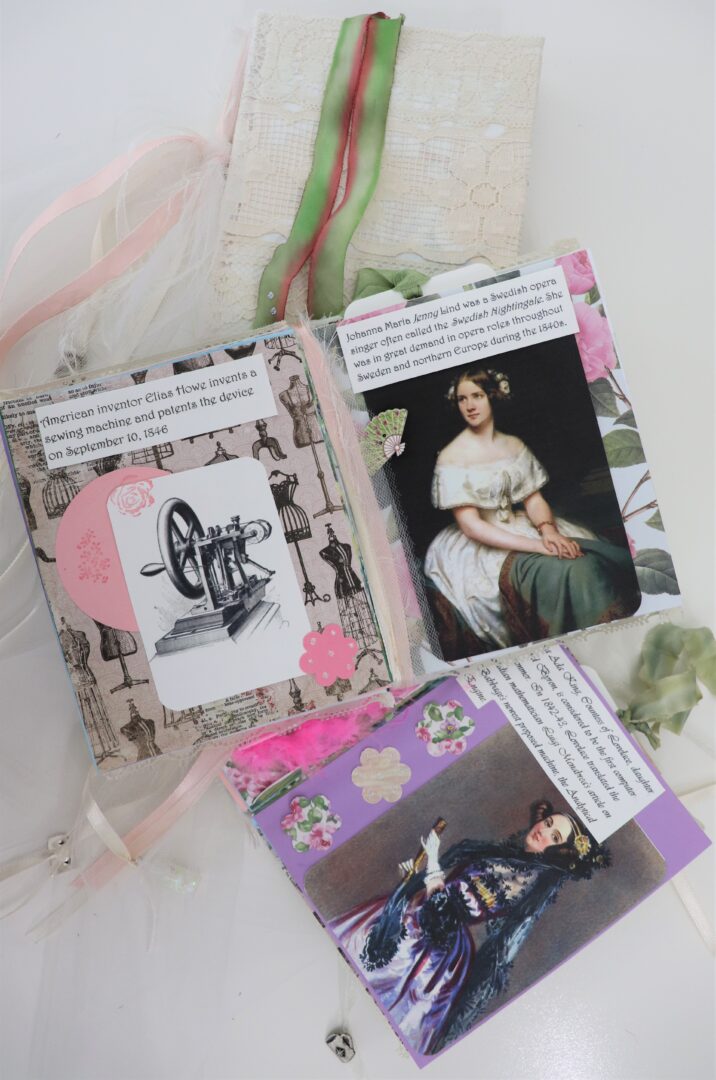
But first I’ll be back on Friday with a post and video covering my dress.

See you soon!
Laura

What a lovely post! The history was so interesting and love the way you interpreted it. Thank goodness our dinners today are so much simpler! 😀
My mother collected Bridal Rose Bavarian china. It came to me as the only daughter but I passed it along to our daughter to enjoy. She keeps it in an antique cabinet one of my brothers had given to my mother . She was so proud of having her dishes in it and so is our daughter. AND better than that, she actually uses them! My mother would be so pleased.
Thank you for sharing your beautiful work. I will be back to read the rest of the posts. 🙂
Laura, The meticulous work and creativity that went into the tea should be in a national magazine. Incredible! I’ve never seen anything so refined and lovely. I love how the favors could actually be used. My goodness! My grandmother was born in 1898 and she often told me about the luncheons her mother gave where garlands of woven flowers, ferns and leaves festooned the sides of the dining room table cloth. I have my great-grandmothers cut glass berry bowls that my grandmother used to serve her grandchildren vanilla ice cream and raspberries from the garden. What a lovely thing to remember this morning . I still have your last post open on my desktop about the workdresses. You are simply amazing.
Laura, ditto everything Ginene said! So much thought and inspiration went into this lovely tea.
I’m sure a delightful time was had by all your lucky guests!
~ carol
Unbelievable, Laura! Those journals look to die for and what a perfect place card for your guests. Of course the tea table and all the food sound fabulous! I cannot wait to see your dress. The sneak preview you showed in the last photo is wonderful. And all the history makes me smile super big. I love this post more than I can say!
How fun. I have always loved all the attention to detail you have. I can’t wait to see about your dress as that fabric is gorgeous.
You sure did go all out and everything is just gorgeous! What a special treat for your guests! I just love tea parties. The fabric of your dress is so pretty. I can’t wait to “hear the rest of the story”!
I just saw this post after reading about your dress. The dress is beautiful and the tea…absolutely amazing! I just don’t understand how you find the time and energy to do it all! I love the history about the food and earlier entertaining. Tea parties are so special and I believe we should do them often. I’m sure your guests enjoyed every minute!
The cake of beeswax is an unusual gift, and simply charming. Nicely done.